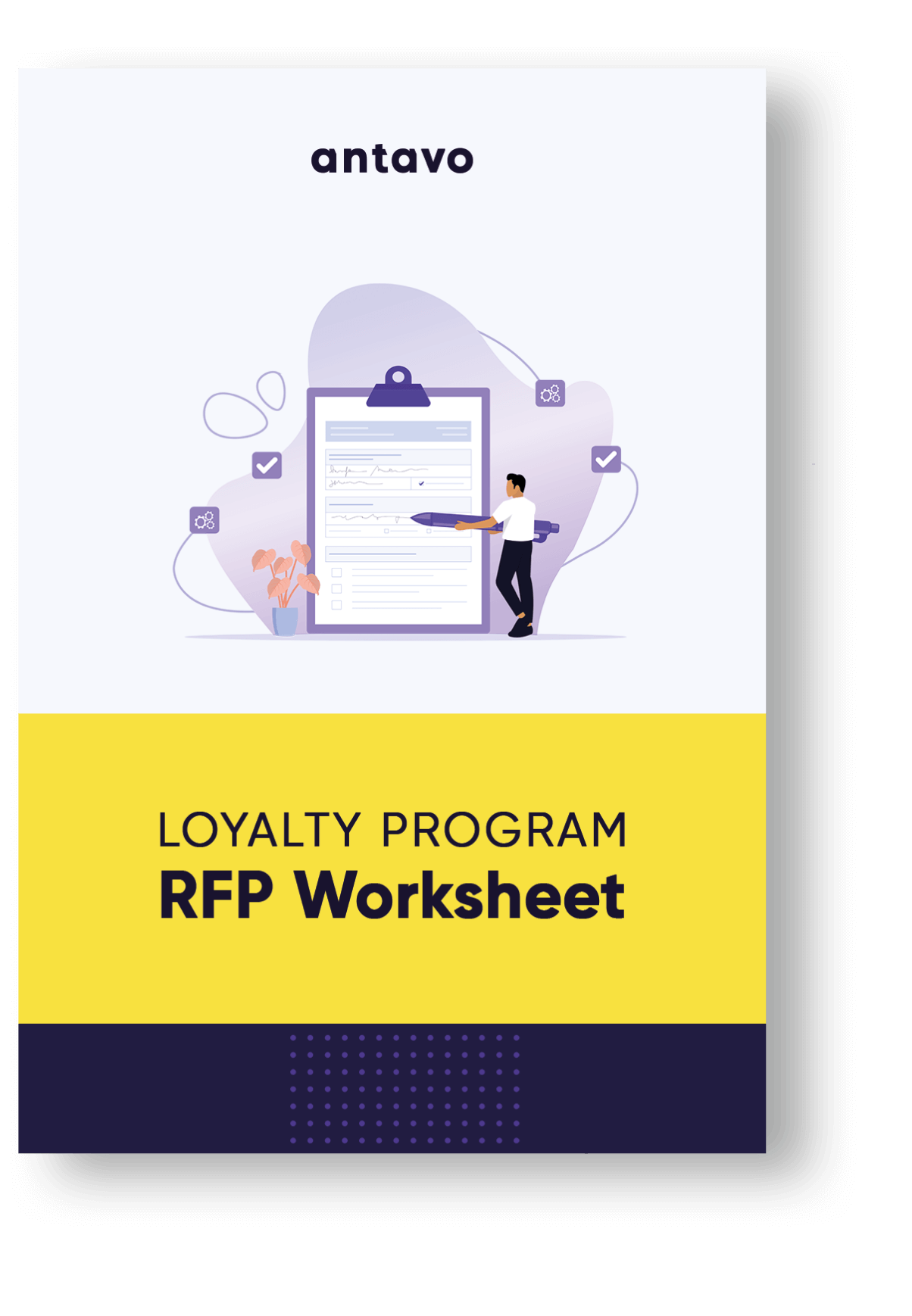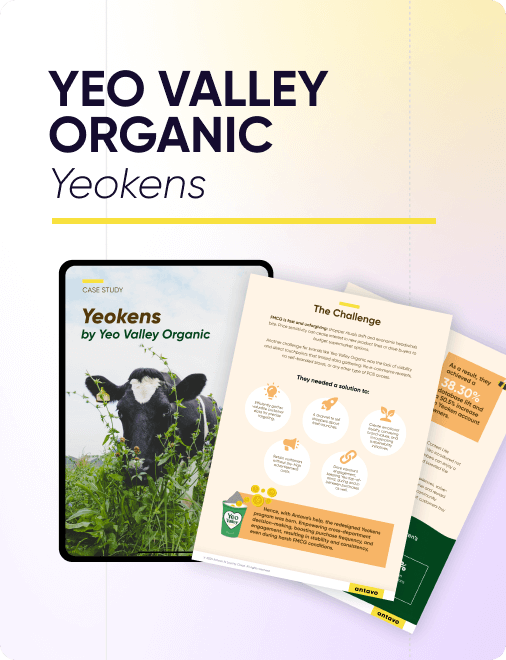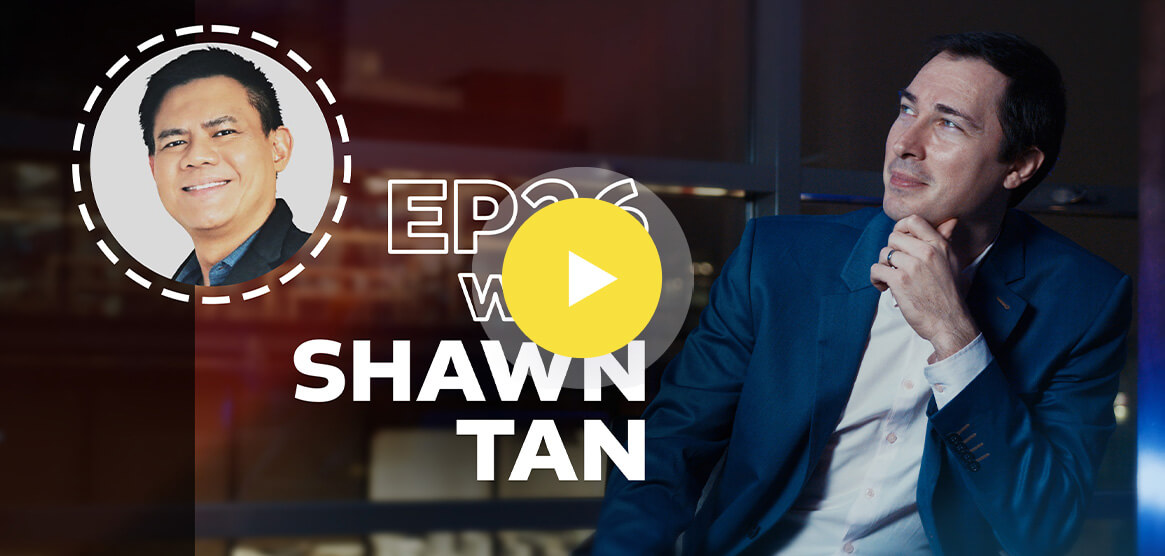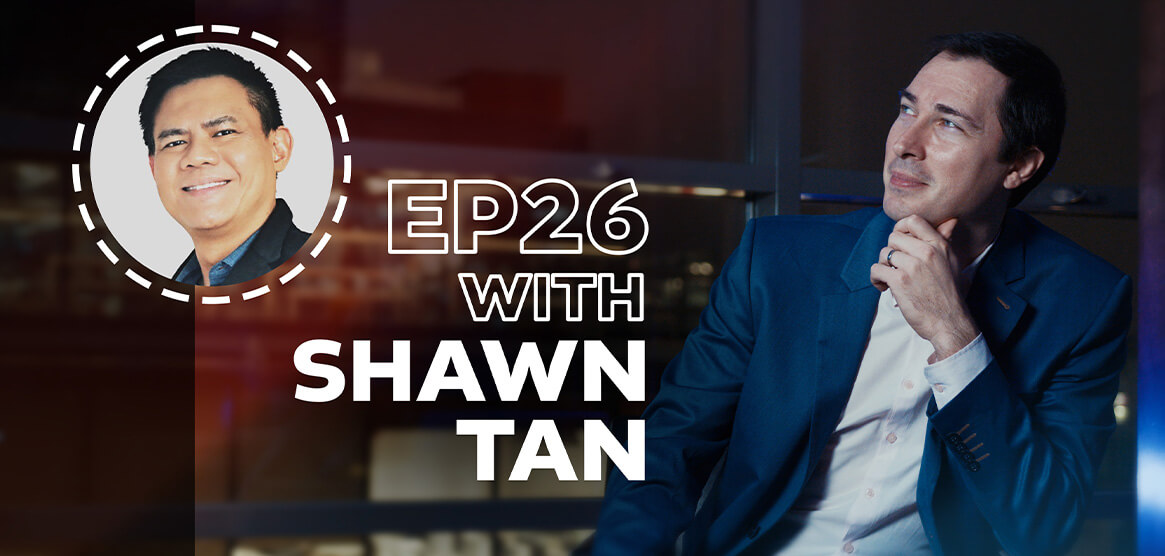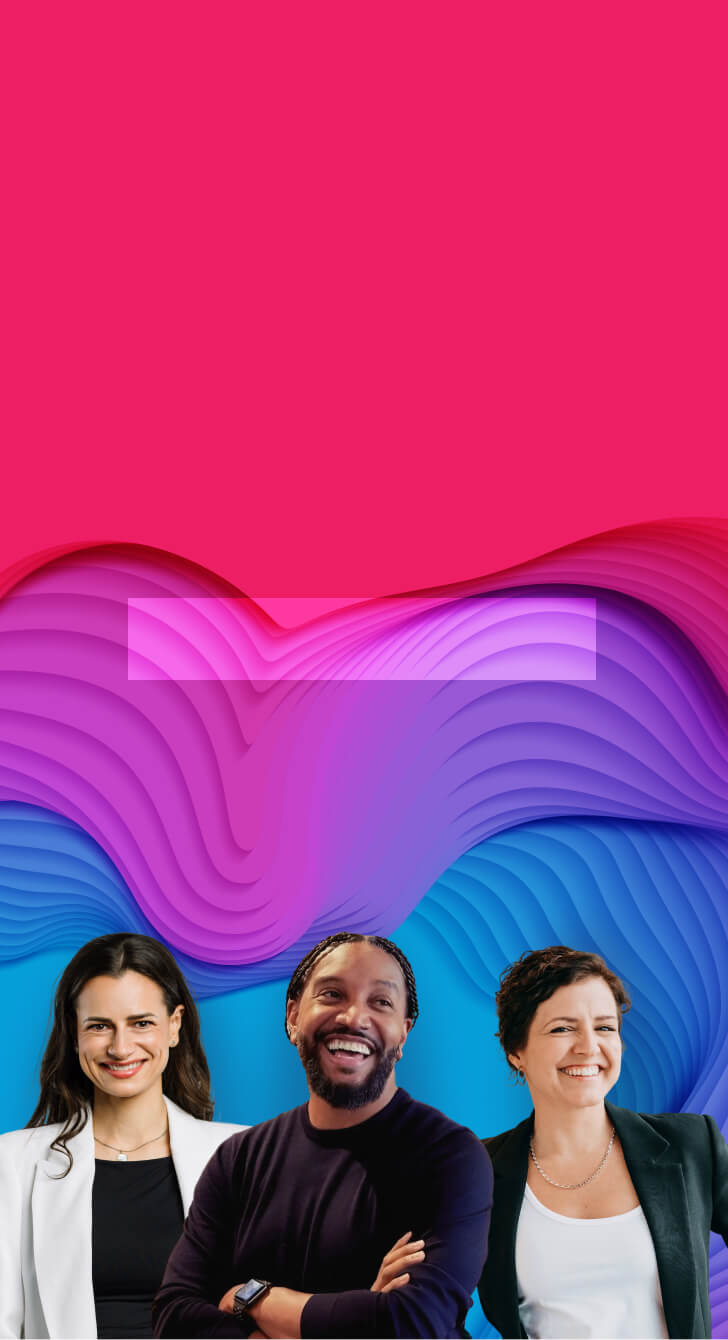This week, on the 26th episode of the Loyalty Stories podcast, our expert guest is Shawn Tan, Managing Director of Interactive Rewards.
The interview for this podcast has been a valuable source for Antavo’s Global Customer Loyalty Report 2024. Make sure to download it for over 30 statistics on loyalty program trends.
In today’s episode, we explore Shawn’s most frequently used loyalty program GrabRewards, and how the program combines a unique set of benefit-earning opportunities from ride-hailing, food-delivery, in-store and online payments, as well as subscriptions. We also talk about the biggest changes in the industry, including accelerated digitalization and subscriptions.
Highlights from our conversation with Shawn:
- How to bridge the gap between companies and consumers during an economic crisis
- Ways companies can enhance their value propositions
- The two most important changes in consumer behavior in the past few years
- Why integrations and connectivity are important in partner relationships
Learn more:
- LinkedIn profile of Shawn Tan
- Interactive Rewards website
- Explore Paid and Subscription Loyalty Programs
- Book a demo with Antavo’s loyalty experts
Gabor
Hi, and welcome to Loyalty Stories, that is Antavo’s podcast on customer loyalty and loyalty programs. I am Gabor Vigh, one of the Partnership Managers at Antavo, and Antavo is a technology vendor that empowers loyalty programs all over the world. We help various great businesses, such as KFC, Benefit Cosmetics, and very well-known global automotive and fashion brands, airports, and so on.
In this Loyalty Stories podcast, we dive into the trends around the loyalty programs and customer loyalty. We talk with industry experts all around the world to pick their brains to learn what’s next and what’s new for loyalty programs.
Today’s guest is the Managing Director of Interactive Rewards Asia, who are an interactive marketing company specializing in digital and loyalty marketing. He is a highly experienced loyalty specialist, returning contributor to the Global Customer Loyalty Report, and a valued member of the Customer Strategy Network.
Please welcome Shawn Tan. Hi Shawn, how are you?
Shawn
Hi, Gabor. Thank you for inviting me. It’s always been a pleasure to speak with you.
Gabor
Thank you very much, Shawn, for accepting our invitation. Great to have you on board. And I really looking forward to discuss loyalty more in details with you. But before we just do that, would you mind quickly introduce yourself for our audience?
Shawn
Right. Yeah, I’m Shawn. I think as Gabor has introduced, you know, and we specialize in providing digital marketing as well as loyalty, engagement services. And we operate in the Southeast Asian region currently. And lately, of course, we have expanded to the EU region as well. And yeah, today I’m happy to share some thoughts as well. And I believe you’ll be in an engaging session with Gabor.
Gabor
And we are eager to hear your thoughts about loyalty. And maybe for a warm-up question, what is your favourite loyalty program Shawn, if there’s any, and why are you naming it and why do you like it?
Shawn
Yeah, well actually I don’t really have a favorite loyalty program but recently I see myself engaging more and more with one particular one in our region here. So as you know I operate in Southeast Asia and the brand, the loyalty brand that I work, I engage with quite frequently recently would be the GrabRewards.
If you all know what Grab is, you know, Grab is actually, it started off as a ride-hailing application, just like Uber is for the EU region, right? So over the years, they have expanded their offering and they included things like food delivery and they have included things like grocery shopping online and offline, as well as payment services. So it has grown from being a ride-hailing app to a super app right now covering a lot of things that you do on a daily basis.
Why I like this app is because it’s just relevant, it’s hyper relevant. I mean, you think about it on a weekly basis, you would probably hail a ride a couple of times, two or three times, and you probably order food delivery services a couple of times as well.
Thanks or no thanks to the pandemic, it kind of become a habit where, instead of getting out to the car park, get your car, drive to a restaurant to eat, spend two hours and come back, now you can order your favorite food from the app and have it delivered.
Well, the experience may not be the same, exactly the same, but then again, this habit kind of stays with you because it’s so much more efficient. You have the food delivered to your doorstep.
So it’s so hyper relevant because you book a ride the same app, you order your food, and then if I go to the grocery store to pick up some bread, some bread, and so on, I can just show my app, and then they just scan it, and I will get my points. So across all these different products and services, you are able to earn your points quite seamlessly and frictionlessly, I would say.
And what can you use the points for? You use it basically to redeem vouchers within the app. Vouchers such as a ride voucher or food voucher or even grocery shopping voucher. So you have all these choices and it gives you very good re-utility because you don’t need to wait until you have 5,000 points and 6 months data to redeem.
All you need is about 500 points for the most basic redemption tier. And once you get this voucher, you can apply it to your next purchase. So that’s why it’s all very relevant and frictionless the way it’s been executed. And because of that, I find myself using it a lot recently.
So besides helping in terms of providing an earn and burn flexibility and relevance, it has got element of tiers. And based on your transaction, when you hit a certain level, you’re at a platinum tier. And as a platinum tier member, you will get better benefits, you have priority when you book your ride.
And of course, everybody wants that. You don’t want to be waiting for doing rush hour for your ride. And nobody accepts your request. So you want to have that priority. So you tend to want to consolidate your purchase and services on one app so that you always maintain your status as platinum status. So that’s another good thing about this program.
Now the next thing is something which I spoke about earlier about subscription-based loyalty. On top of having tiers, they also have a subscription base. That is where if you want to even enhance your points by having double earning potential, two times a points, and you want to have like a free delivery, maybe 10 times free delivery within the month, or discounts, right, better discounts, then you will subscribe to their subscription plan, which will give you additional benefit on top of your Platinum tiers.
So all in all, all this actually helps to make it very relevant and very engaging for you. And plus, of course, the fact that you will also get to enjoy certain gamification elements. For example, this month they want to promote a ride to the airport.
If you book a ride to the airport, they give you a $10 voucher, which you can utilize on your next ride. So there’s a lot of these gamification elements which helps to make it exciting and more engaging. So yeah, I guess this is why I find myself being drawn more and more into this app and using it almost on an every other day basis.
Gabor
Wow, it’s really great to hear that Grab developed so much, because I visited Thailand in 2019 and I was using it only for finding a ride, finding taxis just to get around Bangkok, and these options were not there.
But then I saw similar kind of approach in Uber and also with delivery services here in the UK. And you can have a subscription model. And if you are one of their members, then you get an x amount of free deliveries in a month. But with Uber, what I really like is they have got an Eat app as well.
So the Uber Eats app, where you can order food from the grocery store, you can order food from the restaurants as well. And it doesn’t really cost more than directly ordering food from the restaurant itself and using their services. So yeah, great insights. Thank you, Shawn.
Shawn
Yeah, I think right now Grab is just like Uber, you know, everybody benchmark each other and now they are like the same, you know, you have food, grocery and everything. So that’s good for consumers. The convenience is great.
Gabor
Indeed? Yes, and if you look back on your career Shawn What would you like the most? What is that piece of work that you are the most proud of?
Shawn
Well, I would like to think that I’m proud of all the work that we do for our clients. Yeah, I mean, without any exceptions, but those that I’m particularly proud of, you know, and I am more enthusiastic about are usually the full service clients. What does it mean is that they engage us for A to Z from the strategy, from the implementation, from on the ongoing operations, maintenance, and the review, and so on.
So those projects, we basically operate like a part of the client’s marketing team. We are like an extension of your marketing team. We are jointly responsible for converting the objectives into tangible outcomes, right? And it makes it, of course, much more exciting and I tend to get more enthusiastic because it’s like you’re going to be judged whether you do a good job along with the client teams.
Rather than some smaller scope projects where you do your part and the rest depends on many other parties, and if they don’t do their part, well, the projects may not deliver the same, I mean, the desired results, you are constantly in touch with the client, thinking of new ideas and new things to enhance it.
And that’s where when we achieve the desired outcomes and results, it gives us the greater sense of achievement. Because we know that we have a hand in it when we achieve the success. Whereas, of course, when things don’t go the way it is, of course, we feel the pressure as well, as much as the client. Because then again, to the management, well, what went wrong, we have to be proactively looking at what went wrong and how do we overcome the challenges in order to deliver the business outcomes.
Gabor
Great, thank you, Sean. And you kind of touched upon my next question, that when you said maybe the pandemic brought us some changes, but if you look back one to maybe three years in time, what do you consider the biggest changes in the loyalty space?
Shawn
Well, in terms of the changes in the loyalty space, I think there are many reports that has been written about this, about all the various changes, but I’d like to probably name a few. One is digitization. But again, when we talk about digitization, it’s not that the pandemic caused this change, it was there all along, but the pandemic just happens to accelerate the adoption of digitization, the digital transformation.
Because we all, I think just a couple of years back, we saw how those businesses who did not have a digital front end, they do not have a digital touch point with their customers, how they suffered when physical activity was shut down to a standstill. They totally lost a lot of their customers. And of course, many of them didn’t survive the pandemic.
Whereas those who had, a kind of an omnichannel engagement with the customers. They could switch the engagement from physical while the stores cannot operate, but they can switch the engagement to their website, their mobile app, and send the goods and services to the customers. And they end up still able to sustain during the pandemic.
And even right now after the pandemic is over, they are still able to engage customers across the various channels online and offline. So I think digital is definitely one of the trends that a lot of people will be looking at going forward. Those who have not done so will be in a rush to get it done because they don’t want to suffer if the next round of pandemic or any other thing were to happen in the future.
And already have those channels would probably look at how to enhance it further. And when we think about enhancement of those channels, one of those things would be the data, because you’ll be collecting a lot of data from the digital channels and from the various channels.
So many businesses would probably look at getting tools, analytical tools, customer data platforms, AI machine learning to analyze, to generate insights so that they can better engage your customers, provide better experience, more personalized experience, and so on. So one part of the trend going forward would be this digitalization, which also includes analytics AI machine learning to provide better engagement of their customers.
I think the next thing would be subscription-based loyalty. We have seen that the world is going through a bad economic situation right now. Cost is all gone up and I think a lot of organizations are also cutting down on their costs. So substitution-based loyalty could be one way which they can focus their limited marketing budget, their loyalty budget, onto those that are likely to be most loyal to them.
And a good indication is if they are willing to pay a subscription fee, then it’s a good indication that they’ll likely to be loyal with you, because they’ll be thinking of how to maximize their use of that subscription with the brand. So I think that will be another trend that F4C will probably see greater adoption going forward.
Then next would be the ESG considerations: environmental, social and governance. I know this has been going on for quite a while. Some people base their purchase decision on environmental concerns, sustainability and so on. And that I think will continue to be an important trend going forward because with a lot of, with great awareness of ESG initiatives, some people may want to align their purchase and maybe even their redemption of points and so on along those lines. So this is an important trend going forward.
Then finally, I think again, related to the increasing cost inflation and so on would be the value of partnership in terms of loyalty strategy. I mean, we know that businesses are trying to cut costs, trying to find ways where they can stretch their budgets. They’re cutting the cost. And there are some well-known loyalty programs have already reduced the points they award for the similar transactions.
Then on the other hand, the customers, consumers are facing the cost of living crisis. They’re finding it difficult to sometimes sustain the increasing food costs, energy costs, fuel costs and so on. So at the end of the day, how do we manage these diverging expectations?
On one hand, organization businesses want to cut costs. On the other hand, consumers hope that they can get more from the loyalty program so that they can alleviate the challenges of the rising costs. So these are two diverging realities.
So I think partnership could come in to fill this gap because when you have complimentary partnership, they can provide greater enhanced customer experience for a loyalty operator because now their customers can then buy and engage with more brands.
At the same time, they can earn and burn across a wider variety of partners, and that I think would help to enhance the value proposition for the consumers. So yeah, this will be the few trends I foresee that the next few years we will continue to see greater adoption.
Gabor
Great insight. Thank you, Shawn. And has any of these trends surprised you?
Shawn
I don’t see any surprises. There are more of the trends that has been ongoing all this while. And it’s just that during the pandemic, some of them got pushed to the forefront in response to the effects of the pandemic. But overall, I don’t think there’s any new trend that is out of the ordinary, so to speak.
Gabor
Great. And what do you think? How a loyalty technology company should support these kinds of trends going forward? What are the main features that a company, like a technology company, have to have?
Shawn
I’m sorry, Gabor, if I may, to answer your previous question about the trend, right, any new fresh trend, I’d like to maybe add something now, just something that came to my mind, you know.
Gabor
Okay.
Shawn
Yeah, I’d like to talk a bit about the cost of living crisis and the impact of the cost of living crisis on consumer behavior and why loyalty practitioners or loyalty program operators should be aware of when they design the strategy for the loyalty program.
Now, the cost of living crisis impacts everybody. In some markets in the UK, probably you’ll feel it worse or in Germany and so on because you have rising gas, cost of energy, cost of fuel, cost of food, practically everything.
In some developing worlds, of course, some of these costs are subsidized by the government. For example, I don’t feel any fuel increase for now. I don’t see any increase in the fuel price. Energy price as well is still the same for now because subsets by government. But I do feel a substantial increase in food price, you know, going to restaurants and so on. So again, but everybody will feel it in different ways, you know, depending on where you are in the world today.
In response to this cost of living crisis, I think there have been several reports, research that’s been conducted on consumer behavior. And I’d like to point out some of these, which will be relevant to the program operators when they design their strategy.
One is it’s been discovered that consumers today, in view of the cost of living crisis, are far more likely to switch brands. If another brand and alternative brand give them better value compared to previously. So as much as 50% are willing to switch brands if it helps them extend their dollar. So that’s one thing.
Now the second point that I’d like to point out is that consumers also see, also maybe do see the favor trends, I mean benefits such as instant discount, so there’s a shift towards a more direct tangible benefits rather than something that you earn and you can enjoy later. So they tend to want to have more immediate tangible benefits such as outright discount, such as cash back, such as paying with your points.
So these are things which consumers today are value more than before, especially when dealing with the cost of living crisis. So that’s the second thing. Now, the third point I have to bring up is the ESG considerations, the environmental, social and government, the alignment of these values.
Now, for people who are affected by cost of living crisis, will they still have the same commitment towards these values, the ESG values or not. That’s a big question because for some, they may still feel that these are important values. I will always buy from companies that use sustainable energy, sustainable products and so on. They recycle and so on.
But if you are facing the cost of living crisis severely, you’re struggling to pay your bills, you’re struggling to pay for food, you’re struggling to pay for electric fuel. Now, would you still hold to those commitments as strongly as before? I think that’s a big question that I think a lot of the practitioners need to ask themselves. Yeah. Take for example, give an example. If you have to buy a bag of rice or, you know, bread or milk or something like that, right?
In the past, you want to buy from producers who use renewable energy to produce those things and you don’t mind paying more, 10% more. But now, when you’re struggling to pay your bills, would you hold to that conviction? Or are you going to say that, forget about that, I’m just going to save 10%, go for a cheaper option, I don’t care, they can use fossil fuel to produce the rice, produce the bread or whatever? I’m just going to go with whatever is cheaper, save the money so that I can pay for next month’s bills.
So I think that is an important consideration for loyalty strategies, loyalty program operators, because this shifting of consumer mindset has, I think, a strong impact on how loyalty programs will influence people’s decision in the future. So these are the three things.
Plus, of course, finally, of course, I would think the trend of partnership is very important. We know that, as I mentioned earlier on, there’s the challenge of what we call a lowering cost of operations and the customers, the consumers are expecting that loyalty program can help them to elevate their high expenses. So these are two divergent expectations.
So perhaps partnerships can help to elevate that by bringing in a bigger pool of funding, better benefits, so that this can be passed on to the consumers. So yeah, I just wanted to add that, I just came to my mind.
Gabor
Great, thank you so much, Shawn. Really valuable insights regarding future trends. And yes, me personally, I really hope that partnerships will help deliver a bit of like a decrease cost for the loyalty program members.
Shawn
Yeah.
Gabor
And regarding these trends, what do you see? How will loyalty technology vendor should support these? What are those features that are kind of like must to have these days?
Shawn
Well, I think there’s a lot of today’s technology vendors. I think they’re all pretty advanced and they benchmark each other. So things like gamification, giving surveys, engagement, and creating journeys for customer engagement, all this, I think these are pretty much the standard today. A lot of people have that.
But when I look at the requirements,the needs of loyalty program operators, if they were to pursue a path where they want to have better integration to partners, easier integration to partners, easier integration to other technologies such as CDP, marketing automation, and other engagement systems, then loyalty vendor, tech vendor, how they can support this is, I think perhaps one.
They can develop the architecture, the headless architecture, where you decouple the front end from the back end so that there’s more flexibility for the users to customize the front end to integrate with the social media channels, integrate with the website, integrate with whatever, without affecting the back end. So that’s probably one of the things that a lot of the vendors can do.
The second thing would be the connectivity, the APIs. How do you facilitate connectivity between one loyalty operator to their partners? And so often, I’ve heard from my clients, from loyalty program operators that it’s such a pain. After you go through all the commercial negotiations with a partner to allow partnership points, to earn points from different products and so on.
Now, they bring in their tech vendors. And between the parties, there’s so much discussion about what file format to use and so on, and what do you need to do to customize so that we can synchronize our points files from this system to that system. So there’s a lot of complexity. And it takes weeks and usually months to even get one partnership integrated.
And that is one of the big pain which I hope that the lot of vendors could help to minimize this pain by providing a set of APIs or universal set of APIs which their partners can easily be used to connect, you know, and to ensure that they don’t have to make so much modifications to the system in order to just allow points to be exchanged from one program to another, or redemption to happen from one touch point to another touch point, and so on. So that is one.
Then at the same time, I think also the connectivity to third-party platforms such as CDP, marketing automation platforms, and other marketing platforms, this should be enhanced as well. Because when you have partners and so many promotion costs, partner promotions and so on, you will need to have the data synchronization to your CDP so that you can more effectively derive insights and the right segment for you to run your campaigns and so on.
So that again would be very important so that you can activate on your insights immediately rather than, you know, oh, you could export this file, you could you’re going to find insights, then you send it to another system to be able to deliver the campaigns out. So I think these are all the pointers that I think loyalty vendors should have in order to help their customers achieve better integration, better value, and better customer experience for their customers.
Gabor
Thank you, Sean. And when it comes to technology and loyalty, a lot for us to choose one, what would you say the approach is? Is it buy or build in-house?
Shawn
I always believe that the best approach would be to buy because unless the business has got a huge resource and they got a huge capability, expertise in-house to build. Otherwise and usually, I think that’s not the case. You’re going to have limited resource internally.
So better to leave the the technology to the experts, those who are specialized in developing loyalty technology. Yeah, because in-house, you could build it now, it can meet your current existing need, but do you have continuous team or pool of resource to continue to develop, to know what is best, or what are the future trends so that you can continue to evolve through R&D your technology. You may not have that.
So I always believe the best approach is to buy from a tech vendor who has made it their business to ensure that their system and their technology is up to date with the latest trend, the latest best practice in the market.
Gabor
Great, thank you, Shawn. Is there anything else that you have in mind that you wanted to share today with the audience?
Shawn
Well, I think that’s about all for today. And of course, in another session, I’ll be more than happy to share other perspectives. But I think that’s about it for me.
Gabor
Great, lovely. Thank you very much, Shawn, for being here with us today and sharing your thoughts around loyalty. I really enjoyed our conversations, especially when we were talking about the trends, different aspects, like the ESG, that it was really a great topic last year.
And if I remember our conversation from last year, you were one of the many other loyalty specialist we interviewed who mentioned ESG as a mainstream trend in loyalty. And now what you mentioned about how these ESG initiatives might be pushed back because of the cost of living crisis.
But also another aspect that loyalty programs can bring up is the partnerships and collabs, how, for example, those can help to reduce costs for the members of the Loyalty Program. So that’s definitely food for thought for many of the audience watchers, I hope, but for me definitely so. Thank you very much, Shawn.
Shawn
Yeah, thank you for having me, you know, always a pleasure to be speaking with you, Gabor.
Gabor
And for the viewers, wherever you listen to us, be it on a podcast platform, YouTube or LinkedIn, please like this podcast and subscribe to our channel so you will get the notification when the next episode is out, and also tell us what you think about loyalty in the comment section below. Visit antavo.com to discover your next loyalty software.
Antavo is a next-generation loyalty program technology company used by global companies like KFC, Benefit Cosmetics, automotive and fashion companies, and airports all over the world.
But also, don’t forget to visit Interactive Rewards Asia’s website at www.irewardsasia.com or Shawn’s LinkedIn page to find out more exciting details of his work.
Thank you and see you on the next one. Bye for now.
Shawn
Thank you.
